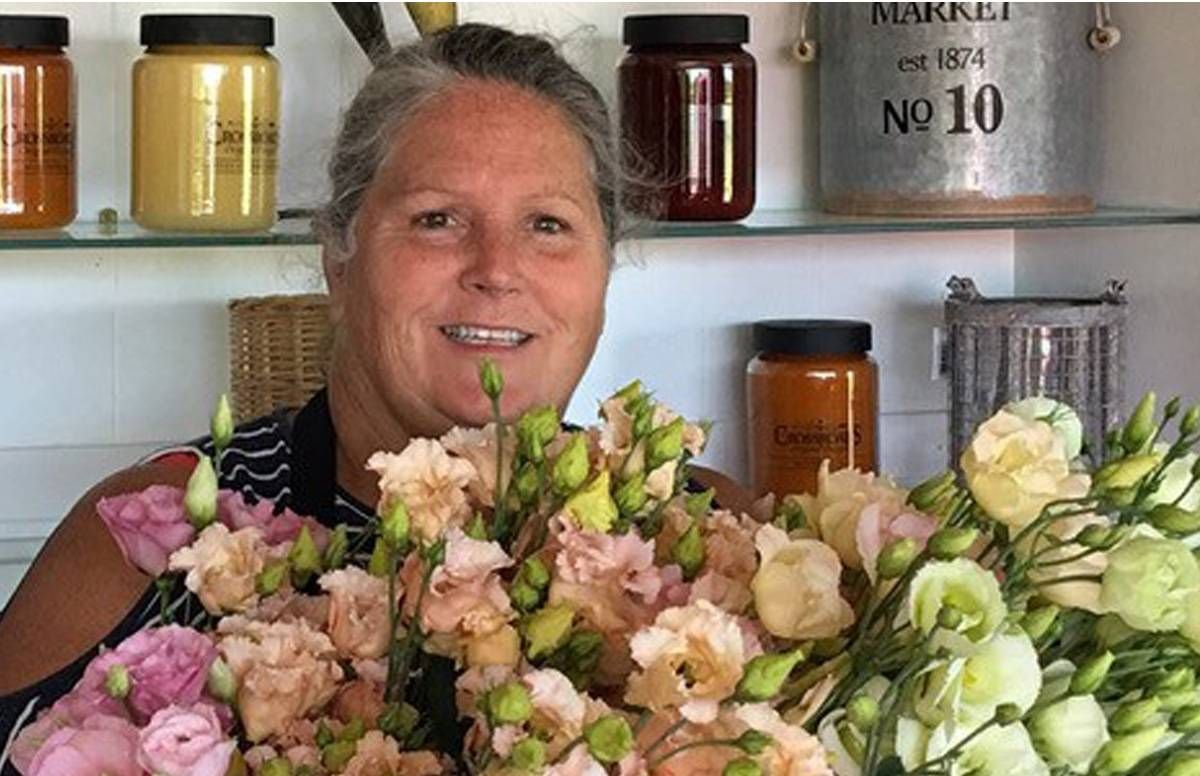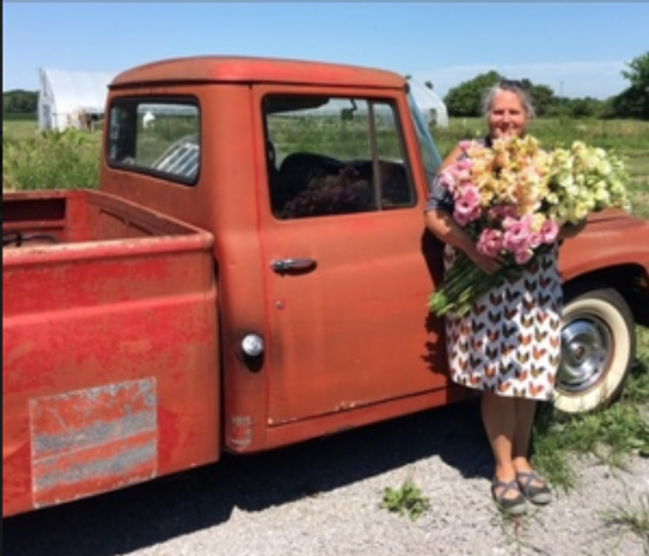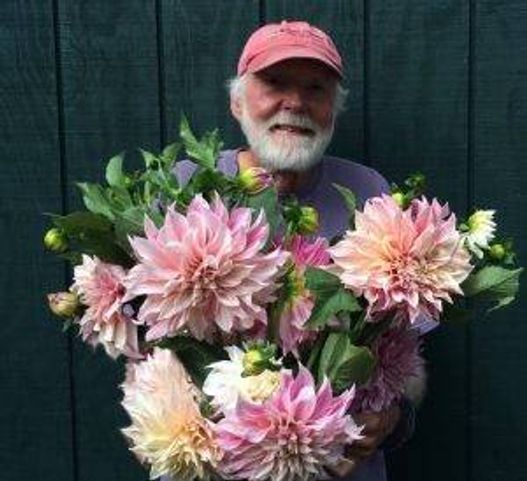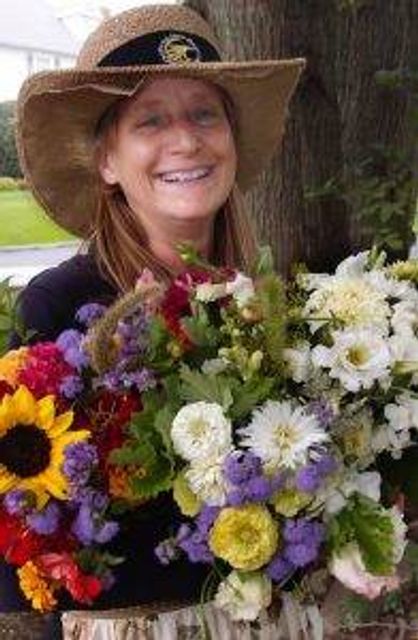Second Careers That Stem From a Love of Gardening
Tips from 3 flower farmers who've seen their businesses sprout
With a growing demand for local, sustainably grown fresh-cut flowers, some people with a love of gardening have found second careers as flower farmers.

“The DNA’s already there,” says Debra Prinzing, 60, the Seattle-based author of The 50 Mile Bouquet and host of the Slow Flowers podcast. “Many growers are lifelong gardeners who’ve made it fit their lifestyles. And with demand taking off, small-scale growers have a competitive edge.”
The coronavirus pandemic, of course, has changed business operations for flower farmers.
For example, many are offering subscription services. For an upfront fee early in the growing season, they pledge to deliver weekly or bi-weekly bouquets or buckets of flowers to homes or designated drop-off points.
"Getting out in the field — it’s my zen."
Demand for local blooms has grown during the pandemic, too, because many flower farmers in other countries haven’t been allowed to export. Another COVID-19 effect: self-quarantine is leading some customers to bring flowers they buy from the farmers to homes of loved ones, neighbors and friends.
If you’re considering becoming a flower farmer, regardless of the pandemic, Bob Wollam of Wollam Gardens in Jeffersonton, Va,, says: “You must like to dig in the dirt, get dirty, love plants and be in good shape.”
Here are how Wollam and two other flower farmers have made their second acts bloom:
Teresa Brown: A Little Income and a Lot of Joy
Teresa Brown, 60, has loved gardening since she was a teen working in her mother’s garden. Discouraged from pursuing horticulture, however, she studied art therapy and today teaches at an elementary school an hour’s drive from the 23-acre Rooster Ridge Farms she bought five years ago in Bryan, Ohio.

“It’s a lot,” Brown says, “But getting out in the field — it’s my zen.”
Brown works year-round growing a wide assortment of flowers, ranging from lilies to snapdragons, on three acres and in a “hoop house” at Rooster Ridge Farms (a hoop house is a series of hoops covered with greenhouse plastic, creating a tunnel to grow plants or food).
Before the pandemic, she’d put in a few hours a day after teaching. Now, though, she’s doing the flower farming about eight to 10 hours a day. Brown’s plan is to run the farm full-time when she decides it’s financially feasible to retire.
With no formal background in flower farming, Brown nevertheless sold out her wares during her first year at the farmers market. She stopped selling there when another flower farmer showed up. But since that farmer has since left, Brown is considering a return.
“I could take that time, bundle my flowers, call a couple florists and deliver and make more than I would at the market. But I miss the connections to the community,” she says.
In the meantime, Brown runs a subscription service, roadside stand and a store that had formerly been her three-car garage. She supplies a floral wholesaler, ships bouquets out of state and provides flowers for weddings. “I did eight weddings last year. I thought that was pretty good,” says Brown.
But with weeds a “continuous headache,” she’s often physically exhausted from the work. “By the end of the day, you can hardly walk. You like to think, ‘Oh, I’ll get used to this, but it never quite happens.”
Down the road, Brown is considering adding a vegetable garden, beehives and a sculpture garden. “I’m not going for the mega-flower farmer thing,” she says. “I just want a little income and a lot of joy. And it seems like it’s working out that way.”
Bob Wollam: From Oil and Gas to Flower Farming
Bob Wollam, 80, has been drawn to flowers since summering as a boy in his grandmother’s upstate New York perennial garden. His passion blossomed during his career in the oil and gas industry which took him to Southeast Asia, where he first saw dahlias. When his company offered a buyout in 1986, Wollam grabbed it. “I thought, this is my opportunity to do something with flowers,” he recalls.

In 1988, Wollam bought an 1819 farmhouse on 11 acres in Jeffersonton, Va. Today, Wollam Gardens sells 80 varieties of cut flowers at farmers markets and Whole Foods stores, and to brides and wholesale florists.
“I’m still active [in the business]. I’m not as active as I was. But I’m out there four times a week,” he says.
Wollam found advice and camaraderie early on by joining the Association of Specialty Cut Flower Growers, which now has almost 2,000 members.
“I met flower farmers from all over the United States who were struggling with the same things I was,” he says. Wollam went on to serve two terms as the group’s president.
Right now, Wollam is uncertain about ways the coronavirus will impact his business.
In 2015, Wollam’s friend built a wedding pavilion on the property. And before the pandemic, he says, “we’d been relying financially as much on that business as on our flower business.” But Wollam had booked 16 weddings there for 2020, before the COVID-19 outbreak. “We’re waiting to see if the four brides we have scheduled in the next eight weeks need to cancel. It’s just the latest challenge.”
Evelyn Lee: A Natural Flower Grower
A self-described “free-range kid” with the middle name Flora, Lee, 60, studied horticulture at the New York Botanical Garden and earned a master’s in environmental studies, which she put to use in the nonprofit sector at the Trust for Public Land in New York City.
“I never pulled an all-nighter in college, but I did pull several with flowers.”
So, she was a natural for growing pesticide-free cut flowers when starting Butternut Gardens in Southport, Conn. in 2011.
Today, she grows 60,000 cut flowers a year on her 1 ½-acre property, as well as a nearby acre featuring a barn for workshops and a cottage for selling bouquets from a cooler on the honor system. “If they overpay, they can underpay the next time,” Lee says. “I can’t be bothered keeping track of that.”

That’s because, as a one-person operation, Lee is the one who normally delivers bouquets to florists, specialty grocery stores and subscribers.
“The 24/7 days and the length of the season surprised me,” she says. “I never pulled an all-nighter in college, but I did pull several with flowers.”
And, Lee adds, the work can be physically demanding. “Sometimes I’m a little sore when I wake up, then I’m fine,” she says.
To stay organized, Lee uses spreadsheets that lay out what and when to plant. “You don’t want to all of a sudden have three thousand tulips and not know where to sell them,” she notes.
All her work pays off in more ways than one. Last year, Lee donated more than $12,000 to local animal rescue and welfare groups and helped start the Connecticut Flower Collective, a co-op of farmers selling to the wholesale market.
“I feel great that I’ve helped others because I’ve been doing it a while and they’ve looked to me for my knowledge and insights,” Lee says.
Advice From the 3 Flower Farmers
Here are a few tips from the three flower farmers if you’re thinking about getting into the business:
Learn the business before you begin. “You have bookkeeping and pricing. And do you have people to sell to?” says Brown. “You need to design a sound farm business plan.” YouTube is awash with flower-farming tips. And, Brown says, you could call a flower farmer and pick his or her brain.
Brown advises spending six months to a year before you’re up and running.
Lee suggests asking yourself: “How much time and energy do you want to put into farming and do you have places to sell your harvests?” Also she notes, “if you want to set up a roadside stand sort of thing, you must be aware of any town or city regulations. Some towns are fine with it; others are not.”
Soak up knowledge. The Association of Specialty Cut Flower Growers, a trade group, has a plethora of information for beginners as well as for seasoned farmers. There are also Facebook groups. And, Lee notes, many cooperative extension programs have excellent flower farming information, including ones at University of Maryland, Cornell University, North Carolina State University and University of Massachusetts.
Brown’s favorite books on the subject include Slow Flowers and The 50 Mile Bouquet, both by Debra Prinzing; Lisa Mason Ziegler’s The Easy-Cut Flower Garden and Lyn Byczinski’s and Robin Wimbiscus' The Flower Farmer: An Organic Grower’s Guide to Raising and Selling Cut Flowers.
Start small and be patient. Says Brown: “You don’t have to have a ton of land” when launching your venture. Wollam thinks one acre is all you’ll need if you’ll be doing it by yourself, full-time.
Lee recommends launching with seeds for summer annuals. “Flowers like zinnias, ageratum, sunflowers and cockscomb all like hot weather and are nice, bright summer flowers,” she says. “Seeds cost very little. You can start with less than two hundred dollars of seed.”
Wollam suggests plowing a few thousand dollars into the business initially if you have land and equipment readily available and “many thousands if you are starting from scratch.” But, he cautions, “You most likely will not have a profit for years.” Adds Lee: “The amount you earn will depend on how much you plant and how far you jump in. Farming is not, however, a get-rich-quick operation.”
Be realistic about the time commitment. It’s possible to be a flower farmer part-time and keep a full-time job. “But there is so much in flower farming, you could easily spend 24/7 every day of the year,” says Wollam.

